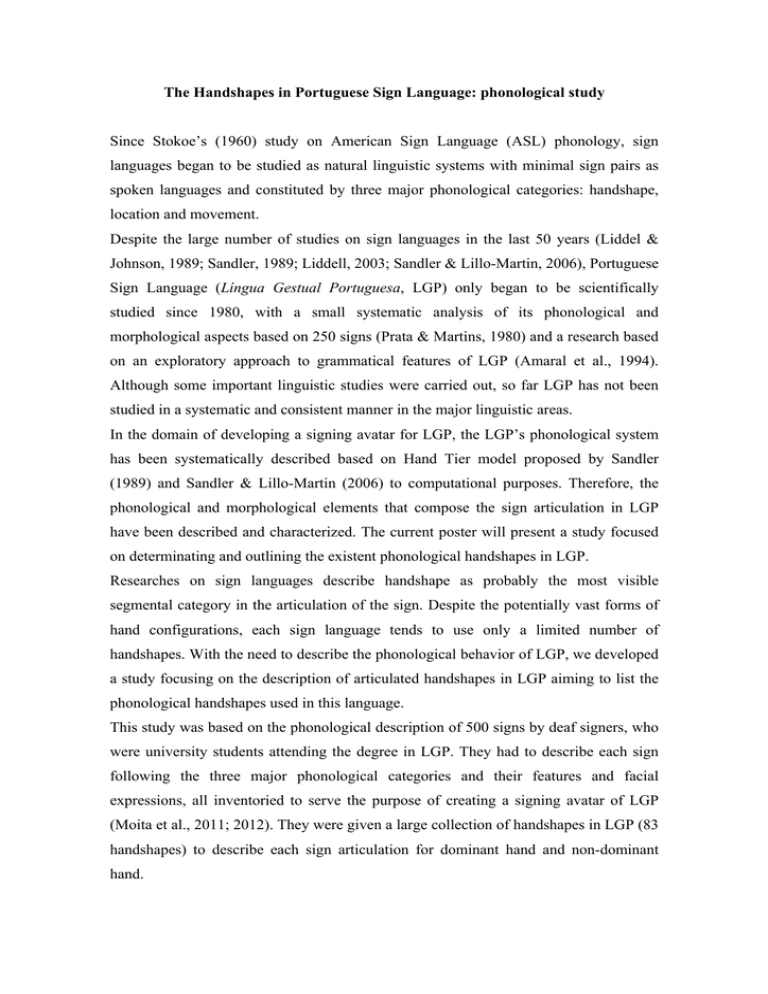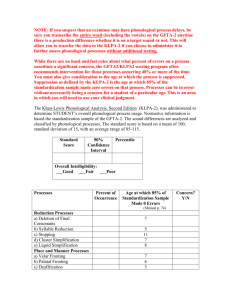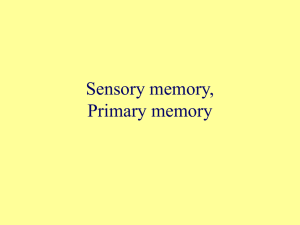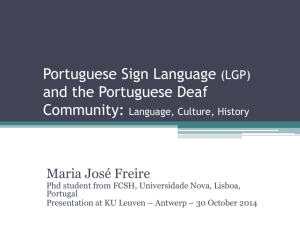The Handshapes in Portuguese Sign Language: phonological study
advertisement

The Handshapes in Portuguese Sign Language: phonological study Since Stokoe’s (1960) study on American Sign Language (ASL) phonology, sign languages began to be studied as natural linguistic systems with minimal sign pairs as spoken languages and constituted by three major phonological categories: handshape, location and movement. Despite the large number of studies on sign languages in the last 50 years (Liddel & Johnson, 1989; Sandler, 1989; Liddell, 2003; Sandler & Lillo-Martin, 2006), Portuguese Sign Language (Língua Gestual Portuguesa, LGP) only began to be scientifically studied since 1980, with a small systematic analysis of its phonological and morphological aspects based on 250 signs (Prata & Martins, 1980) and a research based on an exploratory approach to grammatical features of LGP (Amaral et al., 1994). Although some important linguistic studies were carried out, so far LGP has not been studied in a systematic and consistent manner in the major linguistic areas. In the domain of developing a signing avatar for LGP, the LGP’s phonological system has been systematically described based on Hand Tier model proposed by Sandler (1989) and Sandler & Lillo-Martin (2006) to computational purposes. Therefore, the phonological and morphological elements that compose the sign articulation in LGP have been described and characterized. The current poster will present a study focused on determinating and outlining the existent phonological handshapes in LGP. Researches on sign languages describe handshape as probably the most visible segmental category in the articulation of the sign. Despite the potentially vast forms of hand configurations, each sign language tends to use only a limited number of handshapes. With the need to describe the phonological behavior of LGP, we developed a study focusing on the description of articulated handshapes in LGP aiming to list the phonological handshapes used in this language. This study was based on the phonological description of 500 signs by deaf signers, who were university students attending the degree in LGP. They had to describe each sign following the three major phonological categories and their features and facial expressions, all inventoried to serve the purpose of creating a signing avatar of LGP (Moita et al., 2011; 2012). They were given a large collection of handshapes in LGP (83 handshapes) to describe each sign articulation for dominant hand and non-dominant hand. The results show that the dominant hand uses a higher number of handshapes than the non-dominant hand, which seems to have a restricted number of handshapes possible to be articulated, showing unequal distribution for each manual articulator. Frequency analysis resulted in the reduction of the handshape list and revealed a number of handshapes with higher occurrence in LGP signs. The results of this analysis are the main focus of this poster. References Amaral, M.A., Coutinho, A., Martins, M. R. D.(1994). Para Uma Gramática da Língua Gestual Portuguesa. Lisboa: Caminho. Liddell, S. (2003). Grammar, Gesture, and Meaning in American Sign Language. Cambridge: Cambridge University Press. Prata, M.I. (1980). Mãos que falam. Lisboa, Portugal: Laboratório de Fonética da Faculdade de Letras/Universidade de Lisboa e Direcção Geral do Ensino Básico. Sandler, W. (1989). Phonological Representation of the Sign: Linearity and non linearity in American Sign Language. Dordrecht: Foris. Sandler, W. & Lillo Martin, D. (2006). Sign Language and Linguistics Universals. Cambridge: Cambridge University Press. Moita, M., Carmo, P., Ferreira, J.P., Mineiro, A. (2011) Estudos preliminaries para a modelização de um avatar para a LGP: os descritores fonológicos. Cadernos de Saúde, 2(4) pp: 31-41. Moita, M., Carmo, P., Ferreira, J. P., Mineiro, A. (2012). Preliminary description and analysis of the phonology of Portugues Sign Language for computational modeling purposes. In Formal and Experimental Advances in Sign Language Theory (FEAST). Warsaw. (Poster). Stokoe, W.C.(1960). ‘Sign Language structure: an outline of visual communication system of the American deaf’. In: Studies in linguistics: occasional Papers. Buffalo: University of Buffalo.







![arXiv:math/0407078v1 [math.QA] 6 Jul 2004](http://s2.studylib.net/store/data/018324890_1-f83bc353123ae33fab66674096cc975f-300x300.png)